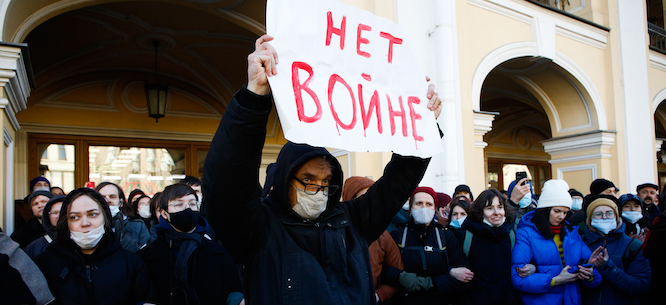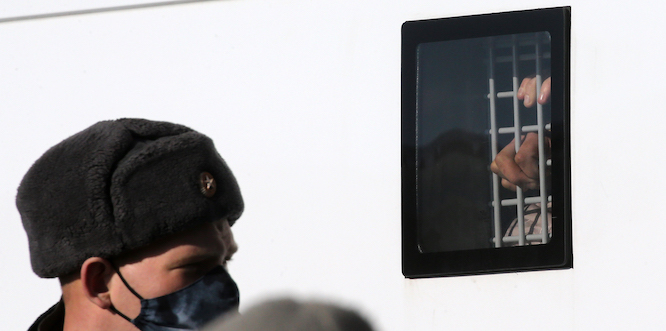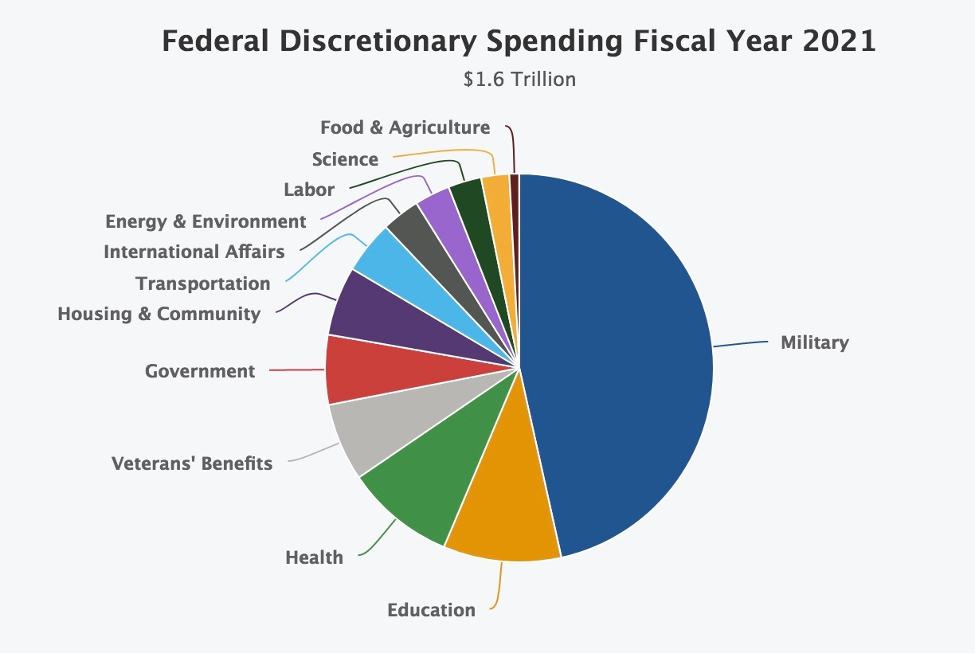Russia’s invasion of Ukraine was a godsend for the North Atlantic Treaty Organization (NATO), which had been declared “brain dead” by French President Emmanuel Macron as recently as 2019. Now, NATO has not only gained a new lease on life but also is expected to grow, with Finland and Sweden inching closer to NATO membership. In fact, Putin’s criminal attack on Ukraine has managed to keep Europe within the sphere of U.S. hegemony and thus to halt any aspirations that Europeans may have had of seeing the continent shift toward greater autonomy.
In the interview that follows, Finnish political scientist Heikki Patomäki provides a critical look into the reasons why Finland and Sweden have opted to join NATO and the potential consequences for Nordic social democracy. Patomäki’s views have been demonized for simply going against the frenzied dictates enforced by Western governments and the corporate media regarding proper responses to the ongoing war in Ukraine. Patomäki is professor of global politics and research director of the Helsinki Collegium for Advanced Studies at the University of Helsinki. He is a member of the Finnish Academy of Sciences and Letters and author of scores of books and academic articles.
C.J. Polychroniou: Heikki, Russia’s invasion of Ukraine has reinvigorated NATO. Indeed, a new era seems to be underway as Finland and Sweden have decided to end decades of neutrality and join the transatlantic alliance. Let’s talk about Finland, which has a long and unique relationship with Russia on account of its history. Why does Finland want to join NATO? Is there really a security concern? What are the domestic debates surrounding its membership in NATO?
Heikki Patomäki: A simple but very incomplete answer is that the actions of Putin’s regime have caused Finland to join NATO. The first peak of support for NATO membership was in 2014-2015, but especially the impact of the 2022 invasion has been dramatic. While a significant part of the political elite has favored Finnish NATO membership for years either publicly or privately, for the bulk of the population the main motivation is now primarily fear. Most lay proponents of NATO seem to think membership will deter Russia from attacking Finland, which of course presupposes that such an attack is an imminent possibility. In their eyes, the North Atlantic alliance is like a big father with big guns who comes to protect us if needed. I think that is a rather primitive argument, even if somewhat understandable under the circumstances.
Finns — like many Europeans — seem to be relating themselves to this war in a very different way than to say the war in Syria or Yemen, or the wars in Iraq (2003-2011, 2013-2017). An aspect of this is clearly related to Eurocentrism: Ukraine is in Europe, and this war is close to us. The distance from Helsinki to Kyiv is about the same as that to the northernmost part of Finland. The invasion of Ukraine evokes historical memories of the Winter War (1939-40) and Russia as the eternal enemy. This evocation constitutes a regressive historical moment involving turning to stories that were prevalent in the 1920s and 1930s when the right was defining Finland as the outermost post of Western civilization against the “barbarism” of Russian Bolshevism. The current understanding is in sharp contrast to the developments after the Second World War when a new cooperative understanding of Finland’s eastern neighbor evolved, despite very different social systems. What I hear now is Western Cold War mentality: The Russians are not only inherently bad but there may be no way we can ever cooperate with them again.
At a deeper level, the impact of the Russian invasion cannot be disentangled from longer-term processes of political change. Responses to the invasion in Ukraine stem in important part from gradual changes in the taken-for-granted background of social understandings, media representations and political rhetoric, which have prepared the ground for what can be seen as a further shift to the right cutting across all political parties. In the 1990s, the identity of Finland was redefined as a Western country, and as a member of the EU, to replace the earlier idea of a neutral social-democratic Nordic country, though the two coexisted for some time. Neoliberalization in turn has gradually changed meanings, mentalities, practices and institutions in Finland, paving the way to the rise of nationalist-authoritarian populism in the 2010s that followed the global financial crisis of 2008-2009 and its aftermath, including the Euro crisis. Some details may be peculiar to Finland, but otherwise, these processes are common across the interconnected world.
Since 1994, Finland and Sweden have participated in NATO’s Partnership for Peace plan. Particularly the Finnish armed forces have been matched with the NATO systems, culminating in a recent decision to buy 64 nuclear-weapons compatible F-35 fighters from the U.S. In the 2000s and 2010s, both countries participated in NATO’s “peace-support” operations and concluded NATO host nation support agreements. Hence, the invasion and the consequent turn in public opinion have merely enabled and triggered the ultimate step in the long process of integration with NATO, namely formal membership.
How would Finnish and Swedish accession to NATO contribute to European security?
Despite the long process of integration with NATO, the step of formal membership is not insignificant. It has potentially far-reaching implications for international relations in Europe and globally. It is prone to spell the end to Nordic progressive internationalism, at least for now.
Whereas during the Cold War the Nordic countries achieved a pluralist and non-military security community amongst themselves and promoted solidarity and common good in their external relations, the step of joining NATO is accompanied by the militarization of society and belief in the capacity of the military might prevent war through superior deterrence. Ultimately, this step is based on the theory of deterrence — including nuclear deterrence — that relies on the abstract calculative logic of self-interested and strategic rational actors. The shift resonates with a wider ideational shift toward the logic of rational choice and optimization under constraints, which is the basis of mainstream neoliberal economics. The concept of common or public good has disappeared from these discussions, except in the form of stability to be achieved by employing deterrence. The term deterrence means to frighten and to fill the other, who is feared, with fear. The ultimate form of this kind of deterrence is MAD, Mutually Assured Destruction. Whereas the Cold War-era neutrality was understood, at least at times, as an attempt to transform the worldwide conflict threatening humanity, the current response stems from a rather narrow self-regarding perspective that is committed to the theory of deterrence. Moreover, the fear of Russia includes a simplistic Manichean story about a hero fighting for freedom and democracy against an evil empire.
It is evident that Russia has started a highly counterproductive war, the byproducts of which now include Finnish and Swedish membership in NATO. A problem is that this membership is in turn a step in the process of escalation of the conflict between Russia and NATO and, so far to a lesser extent, between Russia and the EU. The NATO expansion eastward has been a key issue in the conflict that has escalated step by step since the 1990s. The problem is not only that Finnish and Swedish NATO membership threatens to further escalate the NATO-Russia conflict. This decision will also reinforce the EU’s reliance on Washington. A more global problem is that this step is part of a process in which the world is increasingly divided into two camps in the world economy characterized by trade wars and weaponization of interdependence. Concerns about the effects of the expansion of Western military alliances are widely shared not only in Russia but also in the Global East and South. Moreover, this is no different from Australians and Americans being concerned about the alliance of the Solomon Islands with China. Current alliance formations and reformations are reminiscent of processes that led to the First World War. In the end looms the possibility of a global military catastrophe. Even if this does not happen immediately, such events are part of the development towards a catastrophe in the next 10-20 years — unless the course of world history is altered, for example by a new non-aligned movement.
Russia has threatened to retaliate over membership move on the part of Finland and Sweden. Why is Russia terrified of Finland in particular joining NATO, and how could it retaliate?
The Russian perspective is relatively clear. Russia has been opposed to NATO expansion all the way through. For example, in the 1990s President Boris Yeltsin was often considered Western-minded, yet at the Organization for Security and Co-operation in Europe conference in Budapest in December 1994, he had a public outcry over plans to expand NATO. In various contexts, Yeltsin used consistently words such as “humiliation” and “fraud” to describe plans to extend NATO to the countries of Eastern (Central) Europe. Although in 2000-2001 Putin had discussions about the possibility of Russia joining NATO, what he seemed to have had in mind was the transformation of NATO into something more akin to the idea of the Organization for Security and Co-operation in Europe.
With increasing alienation between Russia and the neoliberal West in the 2000s, in Russia NATO has more and more often been framed as a security threat. Finland has more than 1300 kilometers (km) of border with Russia and is located close to its main centers, in particular St. Petersburg (only 300 km from Helsinki), Russia’s Northern Fleet’s headquarters and main base in the Kola peninsula (similarly close to the Finnish border), and Moscow (1.5 hours flight from Helsinki). Depending on the specific conditions of Finnish membership, membership may mean NATO military installations directly on the western side of Russia and an expansion of territory that would in effect be under U.S. military command in case of a war. The Russian military planners will have to respond by reorganizing their capabilities one way or another.
Nonetheless, the word “retaliation” in your question seems a bit too strong. This is even though for example Maria Zakharova, the spokesperson of the Russian Ministry for Foreign Affairs, has talked about “surprising military countermeasures and actions.” Mostly the Putin regime appears to have adopted a line according to which Finnish NATO membership does not matter that much, not least because Finland was already so close to NATO. The downplaying of the importance of formal membership is in some contrast to the mutual understandings that prevailed until late 2021 and may indicate that Russian decision makers failed to anticipate this consequence of their invasion.
Moreover, any forceful interference — whether taking the form of manufactured migration flows, cyberattacks, or missile strikes — would be very counterproductive. Such an interference could only serve to further strengthen the already strong Russophobia and Russia-hatred among the population and its support for NATO membership. The mood now is fairly belligerent and many Finns back the idea of “defeating” Russia in Ukraine by military means, whatever that may take or imply.
Finland and Sweden are often described as being welfare capitalist societies, both still practicing a watered-down version of the Nordic model, which shows that economic prosperity can go hand in hand with the social welfare state. In fact, Finland has been named the happiest country in the world by the World Happiness Report for several years in a row. Do you think that Finland’s decision to join NATO would undermine what is left of the social democratic model?
While in terms of income (less so in terms of wealth distribution) Finland remains a relatively egalitarian country, the continuity to the era of social democracy is limited to certain functions of the democratic welfare state model, especially health and education. Both have been transformed in the neoliberal era, yet all citizens continue to have access to fairly inexpensive public health care and free education.
However, the health care system is increasingly dual track, part private, part semi-public, the latter involving a lot of private outsourcing. The educational system has been made more responsive to and selective in relation to the social background of pupils and students. Also, it has been reorganized following New Public Management and the pedagogical ideas premised on the innate capacities of the young people. Nonetheless, education remains free to all Finns and citizens of the EU, even at the university level. (Fees have been introduced to overseas students.)
What is striking but not widely discussed is the fact that there has been no real economic growth in Finland since 2007-2008. Yes, it is true that Finland remains prosperous and that in that sense economic prosperity can go hand in hand with the remains of the social welfare state. Nonetheless, the overall picture is complex. It is also true as you say that Finland has been named the happiest country in the world by the World Happiness Report for several years in a row. Happiness in these reports is a composite index, it does not refer to “happiness” as a feeling. This has been a continuing source of amusement among Finns, most of whom do not feel particularly “happy.” For example, suicide in Finland takes place at a higher rate than the European Union average.
It goes without saying that under these circumstances, what is left of the social democratic model is contested. Consider the case of the Left Alliance. The current Left Alliance is a moderate and culturally liberal social democratic party that has focused on domestic affairs, especially on social security, health, education and identity politics (for example LGBTQ issues), and to a degree also on national economic policy. The party is strongly in favor of active climate policy, but possible measures and political differences are seen primarily in national terms. All this is fine but also rather limited. Foreign and security policy has been largely left to other parties. The EU lies in the background, and the future of the union is not really discussed. For example, the Left Alliance has tacitly approved the idea that Finland is part of the “frugal four” in the EU. The lack of European and global vision explains why the party has now seemed so weak on the issue of NATO membership.
Traditionally, the Left Alliance has been strongly opposed to NATO membership but was divided in the parliamentary vote. Yet only a few Left Alliance MPs voted against the proposal of Prime Minister Sanna Marin’s government. (The Left Alliance is part of the government coalition.) I hasten to add that the government decided already in December 2021, to buy 64 F-35 combat aircrafts from the U.S. at the price of at least 10 billion euros, while within the government, the Left Alliance is struggling to get a few extra tens of millions of euros to a particular social purpose. (Ten million is 1/1000 of 10 billion.) In the 1990s, the GDP share of military expenditure could have been as low as 1.1 percent but is now close to 2 percent (the NATO norm). For one, the director of the Finnish Institute of International Affairs is proposing that the GDP share should lie somewhere between 3 percent and 4 percent.
It seems to me that after their decisions to join NATO, Finland and Sweden are on the wrong side of history. For all I know, these decisions spell the end of the Nordic social democratic ideal.
This post was originally published on Latest – Truthout.








